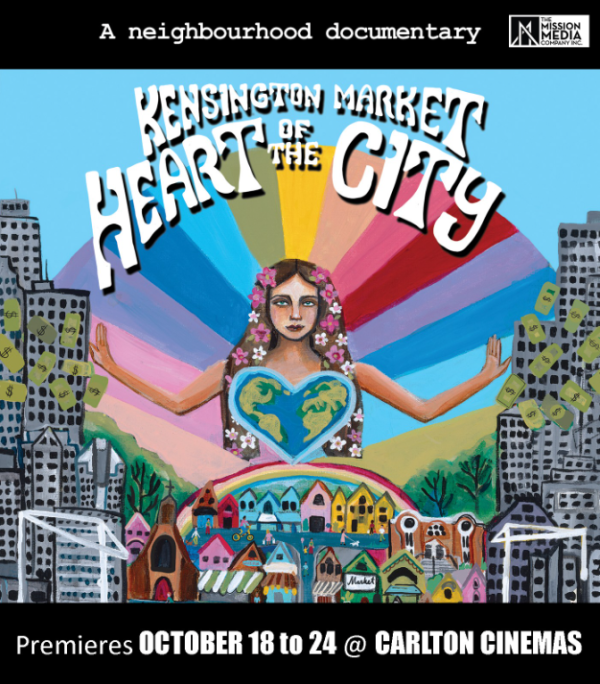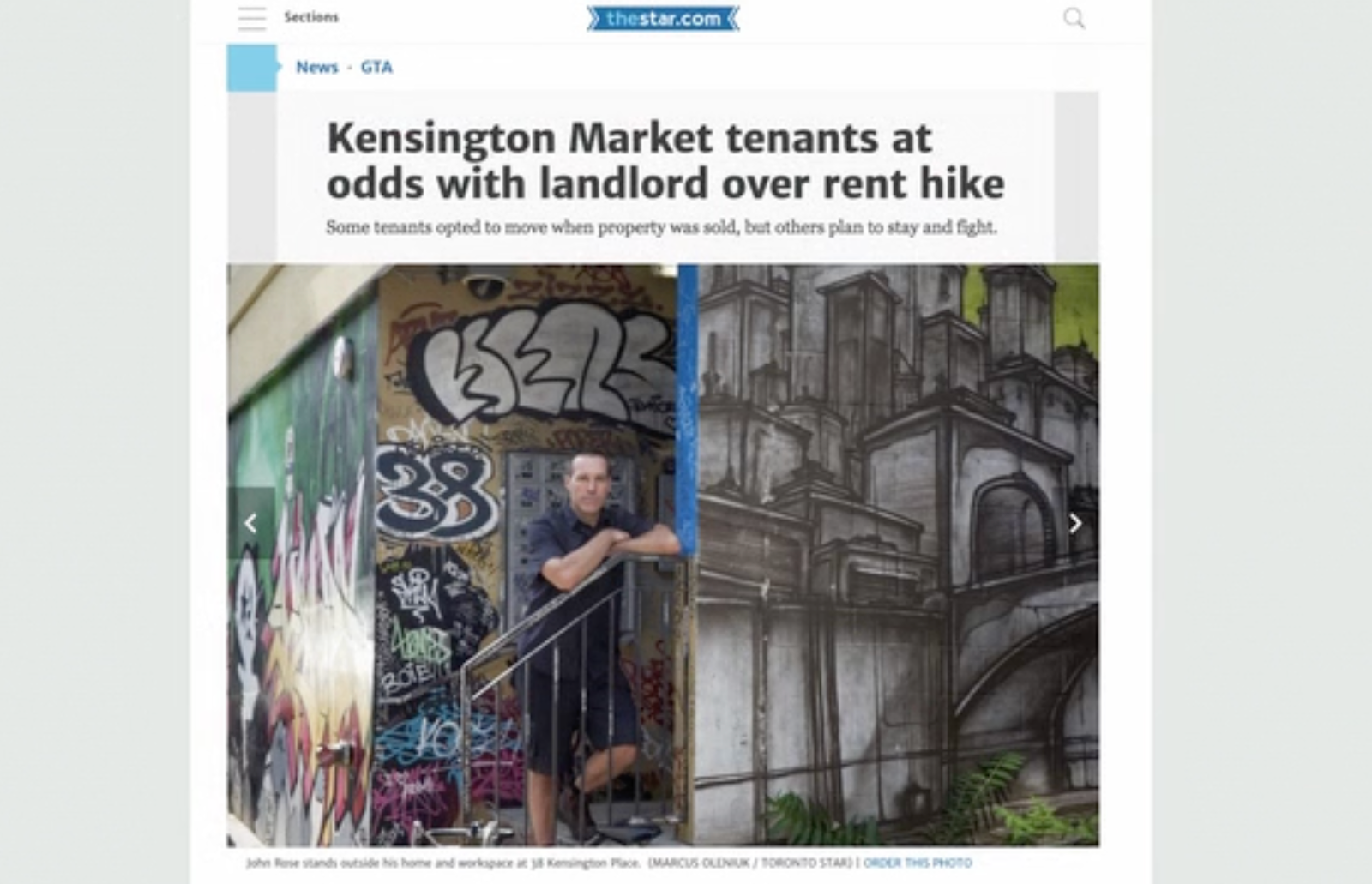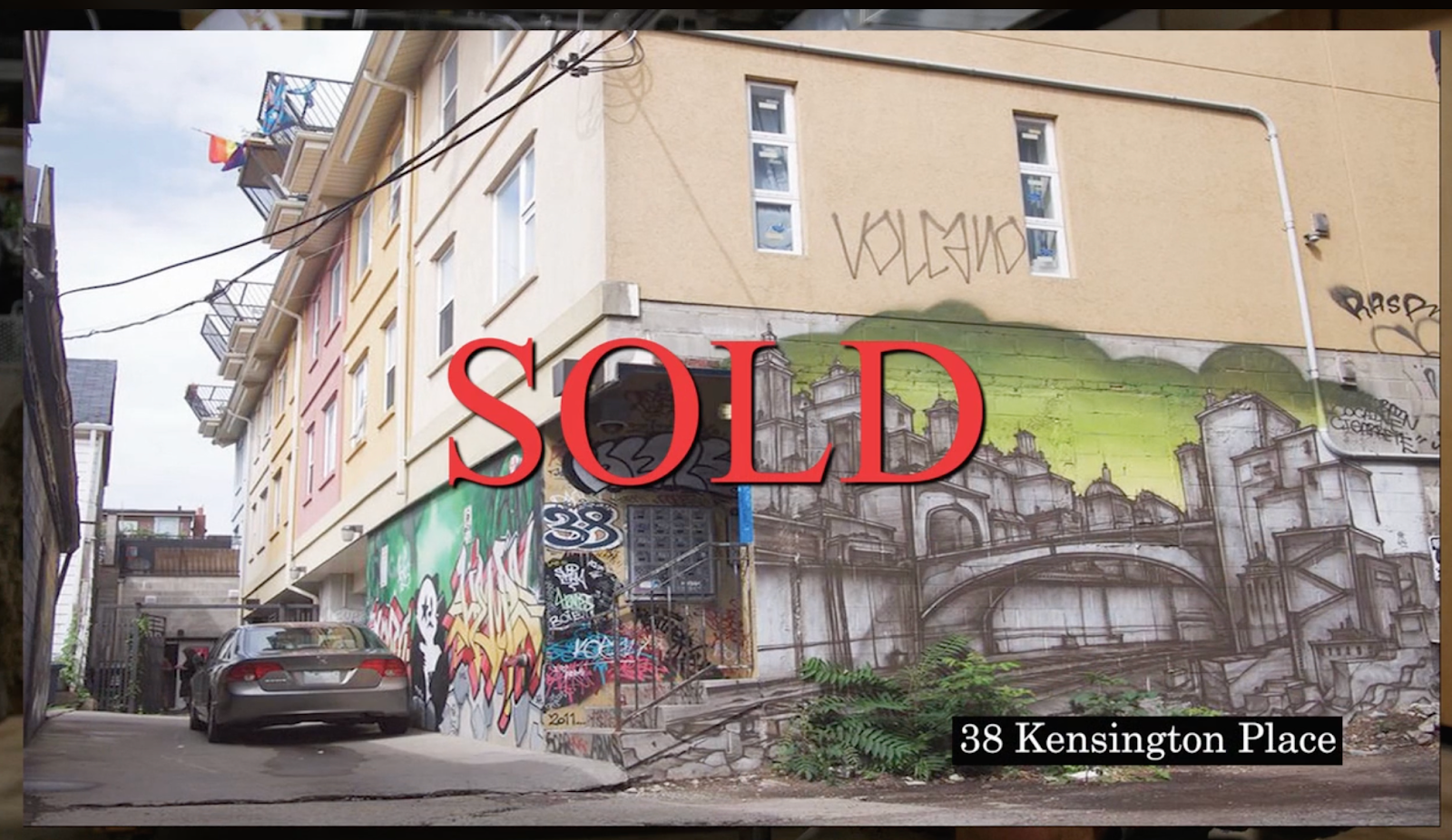Kensington Market: Heart of the City is a neighbourhood documentary that’s been in the making since 2016. “It’s really a look into the heart of the city of Toronto, how it came to be, the state that it is today and what it will become in the future,” says director Stuart Clarfield, a Toronto resident and community advocate. The film’s lengthy production reflects the challenges that come with being self-produced and self-funded. The film ultimately benefited from this extended production period, allowing for a more comprehensive exploration of Kensington Market’s transformation throughout the years.
Through interviews with residents, shop owners, community members and everyone in between, the film tells the story of a market shaped by waves of immigrants—from Eastern European Jews in the early 20th century to post-World War II newcomers from Portugal, Italy, and Hungary, and later arrivals from around the globe. It explores Kensington’s rich history and the challenges it faces today as gentrification and urban development threaten to erase its unique character. “I’ve been going to the market for many years,” said Stuart, who grew concerned as family-run stores became increasingly threatened by the pressures of redevelopment surrounding the market. The film highlights the generations of immigrants who have made the market their home, while documenting the gradual loss of legacy businesses and community spaces.
The People of Kensington
The documentary is filled with personal stories that bring Kensington Market to life. One such story comes from Pearl Lottman Godfrey, whose father arrived at the market from Poland in the 1920s. Reflecting on the close-knit community of her youth, she said, “People really cared about each other. It certainly was a lovely way to grow up, even when I don’t really see it anymore now.”
Another voice in the film is David Perlman, a community advocate and the chief publisher of the local newspaper Kensington Drums. While its last publication date was back in 2001, this newspaper had published for 13 years, featuring and keeping tabs on local stories in the market that were largely ignored or unaddressed in professional media outlets. Perlman’s family has rented the same house in Kensington for 50 years. “My adult children could never afford what it takes to buy or rent here now,” he said in an interview with Spacing Media. His story is one of many in the film that illustrate the growing divide between long-time residents and the new wave of development in the market.
As Clarfield interviews folks from all walks of life—homeowners, renters, shop owners, and even homeless individuals—one common theme emerges: Kensington Market is a place where people have always felt welcome, including those who felt marginalized in the rest of the city. “It’s a magic village,” one resident says in the film. “This is where we belong. Here, you don’t need to worry about being talked down to or belittled in any way. That’s why I’m still here. It’s the people.” Other residents also spoke of a “magic” in the crumbling brick buildings and vibrant streets. But that magic is disappearing as rents soar and condos rise. “It doesn’t care about poor people or immigrants,” Clarfield said of the city’s growing development pressures. The documentary captures the deep connection people have to the market and their distress as they see it change before their eyes.
The Struggle for Survival
Throughout the documentary, Clarfield captures the growing tension between the market’s past and its uncertain future. One focal point of the film is St. Stephen’s-in-the-Field Church, a historic building on College Street at the edge of the market, not far from the University of Toronto, that has been under constant threat from developers looking to convert this valuable location into a taller building with many small units.
The film argues that this is “bad social engineering,” a vertical student residence built for the rapid recycling of international students who come and go over 1-2 years. Rather than creating a sustainable neighbourhood community that plants roots within the city, it aims for quick profit turnover by charging high rental prices. “It’s the same story all over the city,” Clarfield said. “The film became a personal mission to show what’s at stake.”
The film also highlights another instance of local residents being impacted by the pressures imposed by urban redevelopment through the experience of John Rose, who lived in an artist studio located in a niche, almost hidden corner of the market that had been opened up to artists like sculptors and painters who have enjoyed its natural lighting. While this studio was used to facilitate the creative works of artists, it was unfortunately targeted for a hostile takeover. This is described in the film as a “traumatic experience” where 18 people were uprooted and evicted by “big burly bounty hunters”.
As the market evolves and landlords continue to evict, raise prices and gentrify, the sense of community that once defined it is slowly being eroded. Long-time residents like Perlman fear that their home is slipping away. “We could never have found our way here now, with how the market is,” Perlman explained. “It’s all about people’s ability to pay, and a lot of people are being squeezed out.”
A Quest to Preserve The Heart
In cities like Paris, London, and Boston, historic neighborhoods are preserved and protected from modern development. Clarfield hopes that Kensington Market: Heart of the City will spark broader discussions about development and displacement in Toronto. He draws comparisons to these cities, where cultural and architectural heritage are fiercely guarded, and questions whether Kensington Market will meet the same fate.
“We worked our a**es off to hold press conferences and call attention to these issues,” Perlman said in the interview. “But at the end of the day, we realized that all the work we put in only gets us five minutes of attention.” The film, according to Clarfield, is not just about the market—it’s about the broader struggle for the soul of Toronto, a city rapidly losing its most beloved spaces. As previous Toronto Mayor (1978-80), John Sewell said in an interview with Clarfield, “Kensington is the last remnant of the ‘Old Toronto’”.
A Personal Mission
For Clarfield, the film represents the culmination of his career, which has focused on telling local Toronto stories. His previous works, Welcome to the Parade and In the Dark, also explore the intersection of urban life and personal experience. But Kensington Market: Heart of the City feels especially personal. “I have a deep love for this city,” Clarfield said. “And I’m deeply committed to telling its stories.”
The documentary highlights what makes Kensington Market special: the sense of belonging, the layers of immigrant stories, and the vibrant community that has thrived for over a century. But as Clarfield’s film shows, that vibrant community is at risk. The city’s heart is growing cold, and Kensington Market, like so many other neighborhoods, is fighting to survive in the face of relentless development pressure.
This documentary provides an opportunity to experience the texture and rich stories told by folks from diverse backgrounds. This film is also a call for intentional discussions about how we maintain the recognition of people as the heart of the city – the human element of urbanism – as we talk about intensification and redevelopment.
The documentary Kensington Market: Heart of the City is showing at the Carleton Cinema until Oct. 24, and will show at the Revue Cinema on Wed. November 27th, at 6:45 pm.
All images are from Kensington Market: Heart of the City, directed by Stuart Clarfield, produced by Stuart Clarfield. Courtesy of The Mission Media. © 2024.











